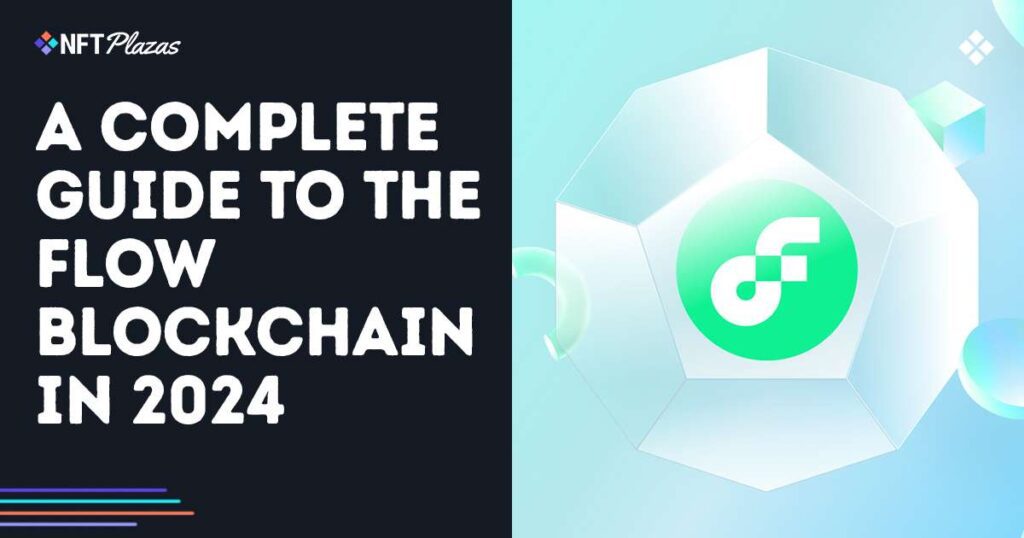Following the success of CryptoKitties, developers at Dapper Labs knew that for Web3 games to thrive, an alternative to Ethereum was needed: enter To flow.
Flow was Ethereum’s first major competitor for games, applications, and experiences, and has powered many of the most popular blockchain applications to date.
Despite the takeoff of Ethereum Layer-2 blockchains and the rise of competing Layer-1 chains, Flow is still at the top of the industry – but what sets Flow apart and why is it still the chain to beat?
Here is our complete guide to the Flow blockchain in 2024.


What is flow?
Created by Dapper Labs – the team behind CryptoKitties – Flow is a layer 1 blockchain designed to support high-traffic games, experiences, and digital collectibles.
The popularity of CryptoKitties has severely affected the speed, reliability, and usage fees of Ethereum, which is why Dapper Labs built Flow, a modern blockchain capable of meeting the demands of their popular blockchain game.
Flow is powered by the $FLOW token, a native cryptocurrency involved in transactions, staking, and network governance.
In addition to CryptoKitties, Flow hosts some of the best blockchain-based games, apps, and platforms, including officially licensed titles such as NBA Top Shot, NFL All Day, and UFC Strike.
While many of these are internal products, Flow offers extensive documentation for external developers and has partnered with third-party teams to create a complete ecosystem of apps, tools, and platforms built on Flow.
Flow claims to be the “home of the Web3 consumer” – and its partnerships, products, and growth make that a legitimate claim.


How does Flow work?
Dapper Labs sees Flow not as an alternative solution, but as a better solution.
Flow uses a unique multi-role architecture. Instead of dividing the network into fragments, Flow divides transaction processing into four specialized roles:
- Collection nodes: manage transaction data
- Consensus nodes: order, validate and sequence transactions
- Execution nodes: processing transactions
- Verification Nodes: Keep the network in sync and secure
This allows Flow to process large numbers of transactions quickly, reliably and securely – and it has proven to be effective, keeping the blockchain both developer-friendly and performant.
As a Proof-of-Stake (PoS) network, users can either run a node or delegate their $FLOW holdings to existing nodes to earn rewards. While many of Flow’s core products come directly from Dapper Labs, blockchain governance is becoming increasingly decentralized, with decision-making falling to token holders.
For developers, Flow uses a unique programming language called Cadence, optimized for digital assets and smart contracts. It offers a range of tools and documentation to simplify building on Flow, with the hope that Flow will accommodate mainstream Web3 applications.


The History of Flow
The idea for Flow follows the success of CryptoKitties in 2017. Flow’s mainnet launched in 2020 – and it didn’t take long for the channel to explode in popularity.
NBA Top Shot gained mainstream attention in 2021, being the first major Web3 application to do so. This popularity led to short-lived partnerships with Instagram and Facebook in 2022, as well as the launch of NFL All Day, UFC Strike and many other officially licensed products.
In recent years, Flow has faced increased competition from Ronin, Base and Avalanche, although no blockchain has yet matched its mainstream success.
It hasn’t all been easy. In June 2024, Dapper Labs reached a $4 million settlement with NBA Top Shot holders in a lawsuit alleging that Top Shot collectibles are titles — and it’s still unclear what impact that will have might have on other officially licensed titles on Flow.
Nonetheless, Flow continues to grow in popularity – and its recent Crescendo update, which brings full EVM support, is just the latest in a long line of successes for the Flow ecosystem as a whole .

